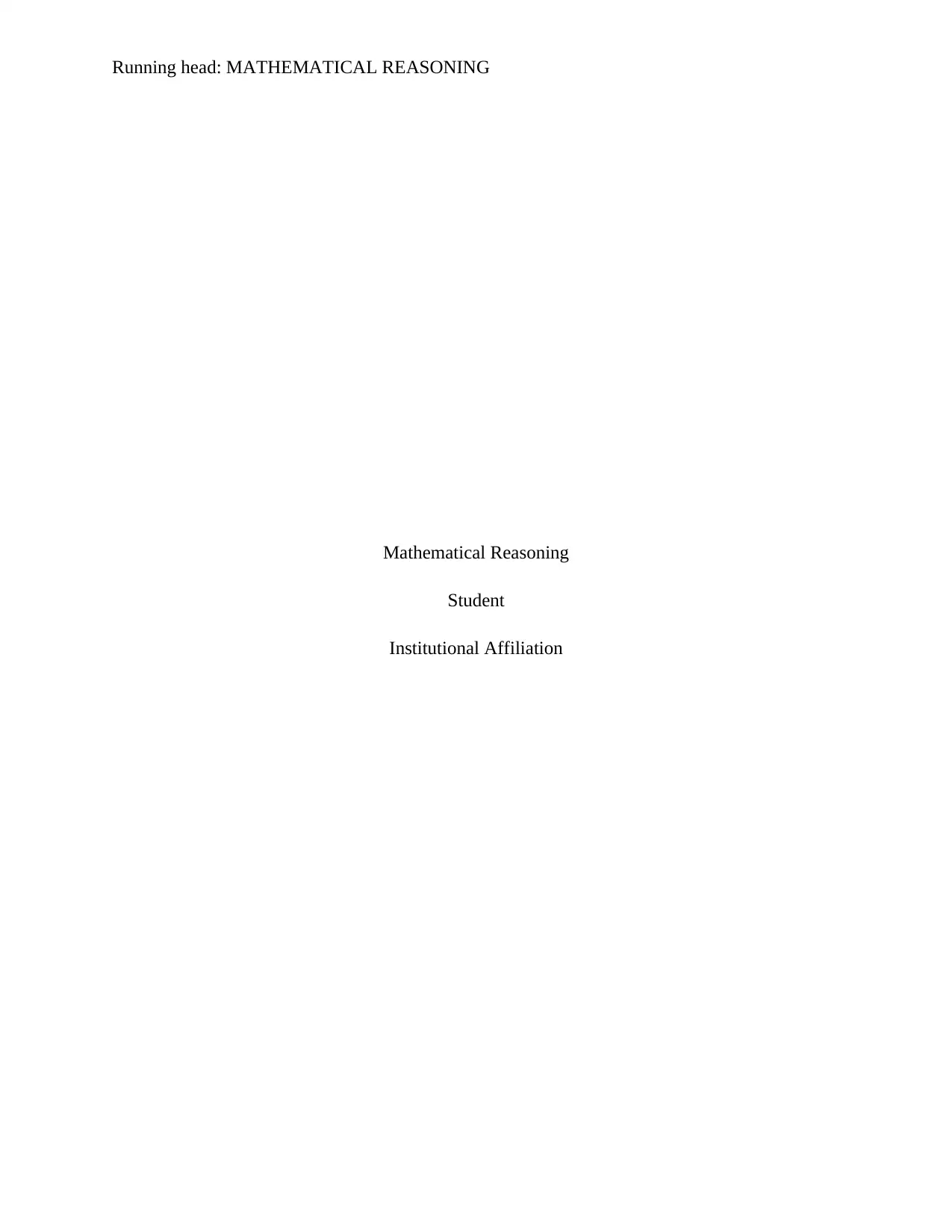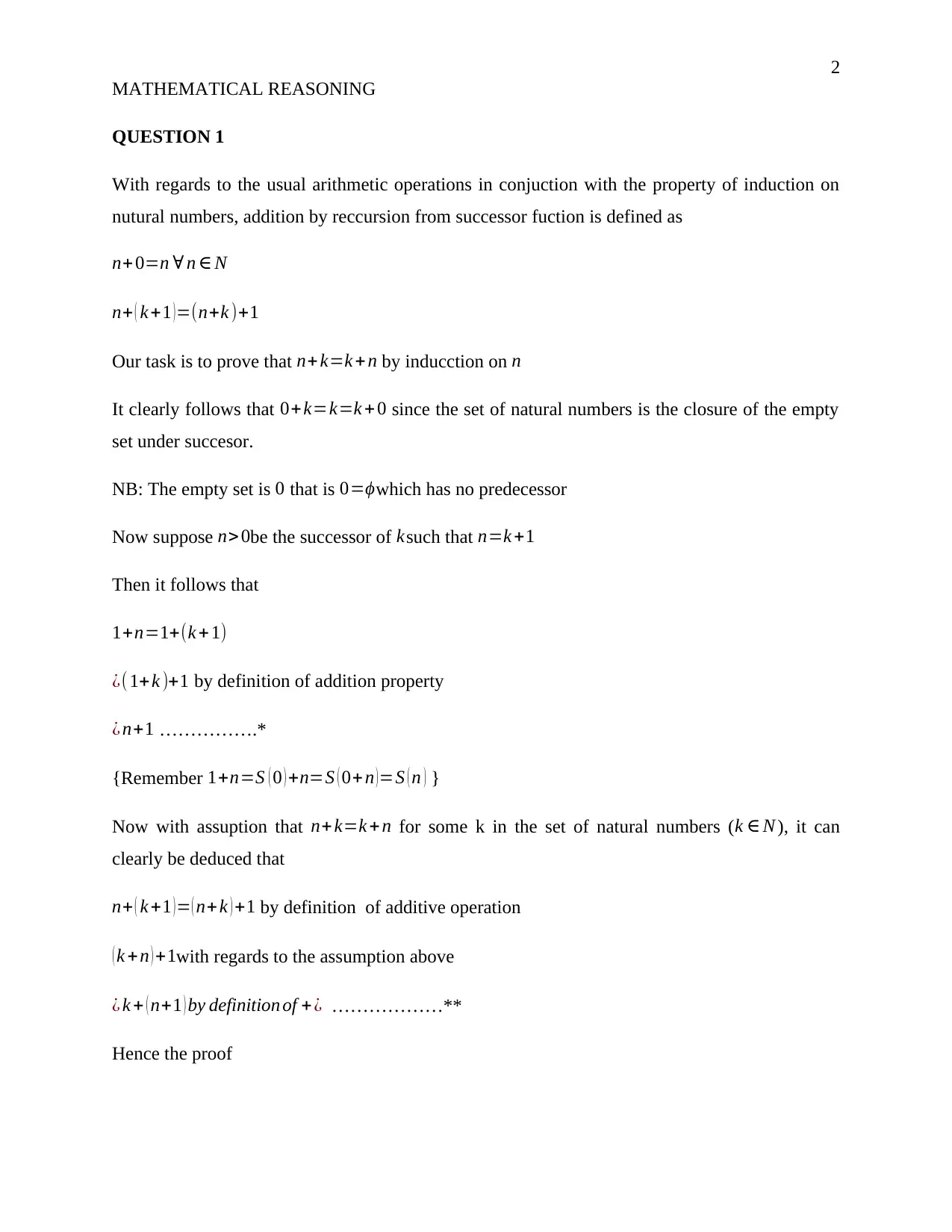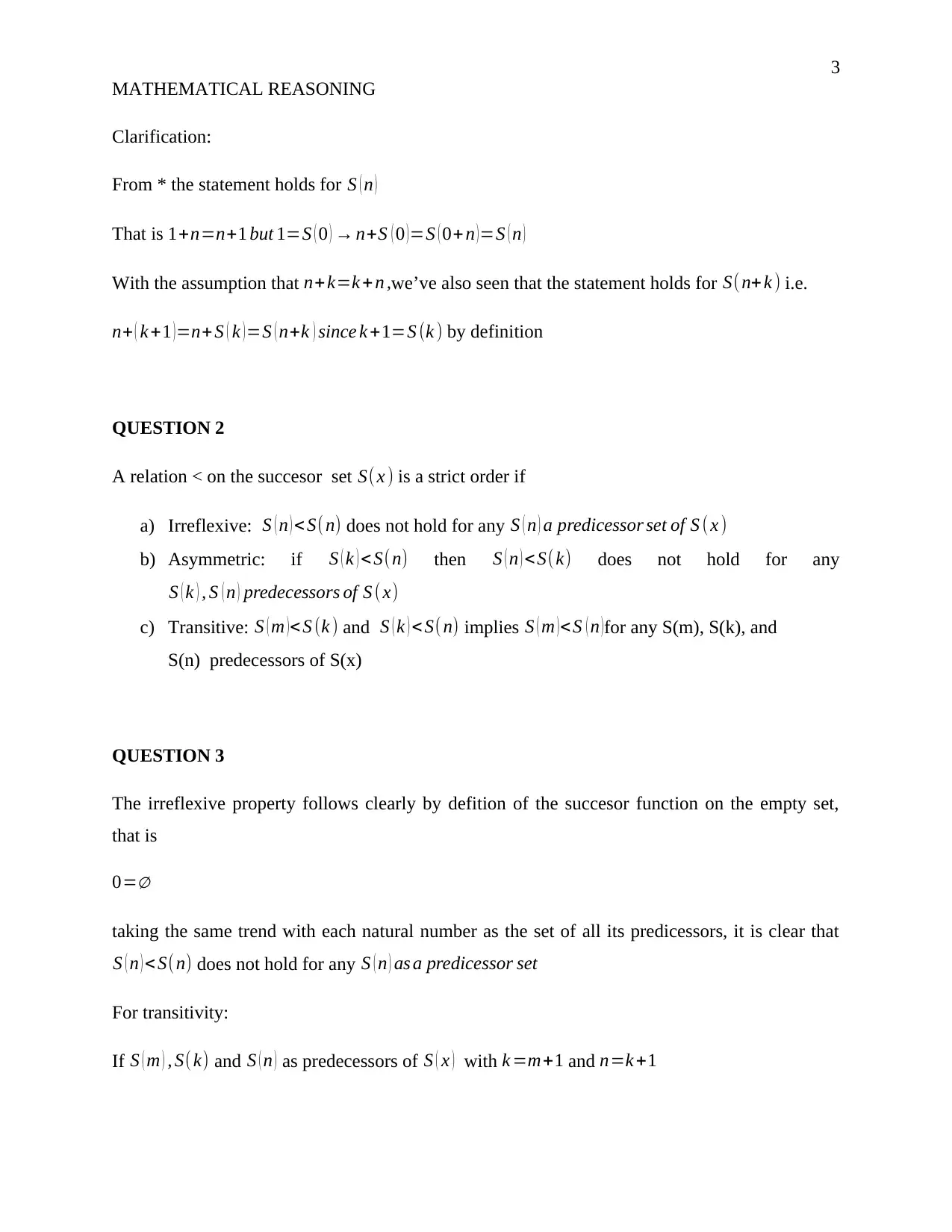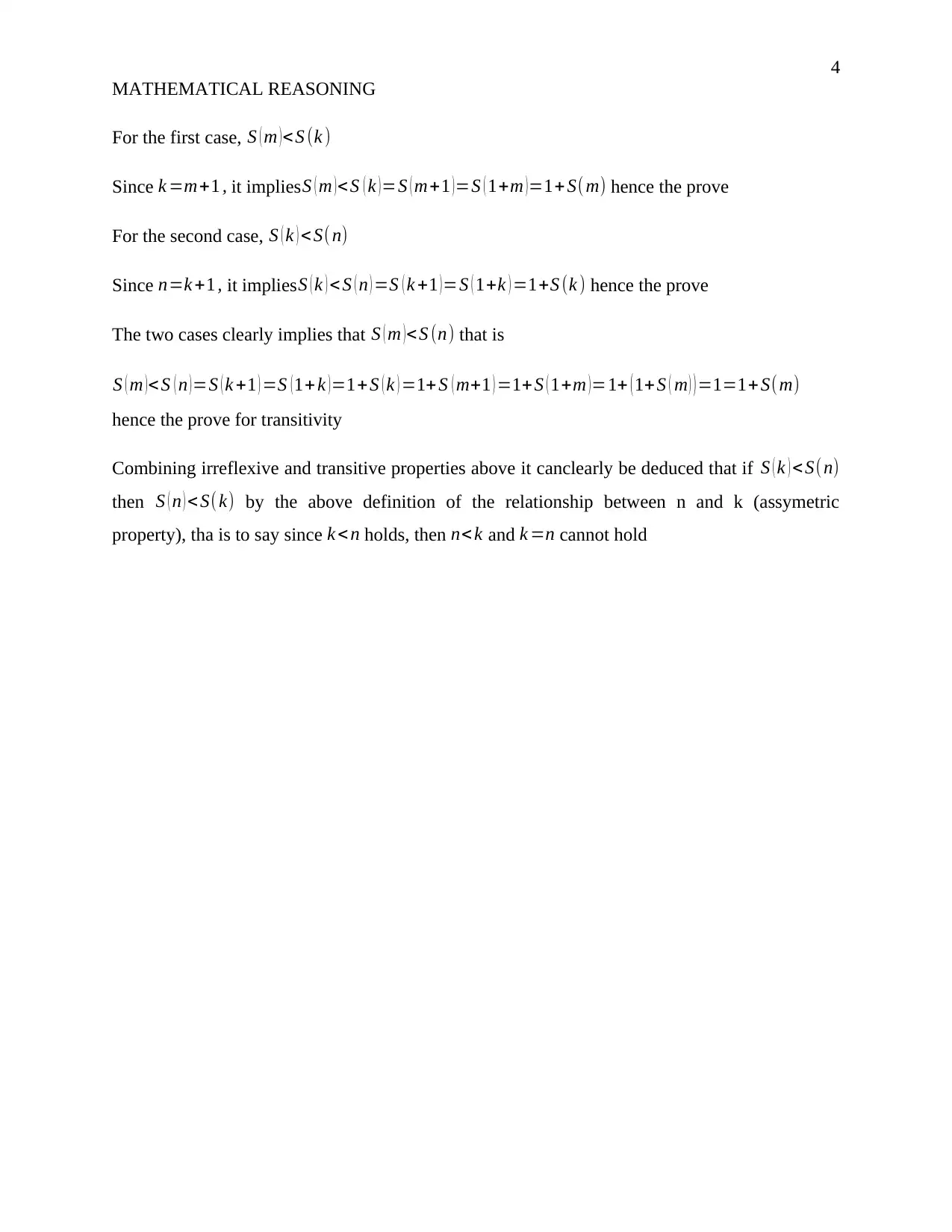Mathematical Reasoning: Induction, Successor Functions, and Order
VerifiedAdded on 2020/03/16
|4
|359
|37
Homework Assignment
AI Summary
This assignment delves into the core concepts of mathematical reasoning, concentrating on induction, successor functions, and order relations. It begins by exploring the definition of addition through recursion and the use of successor functions, providing a detailed proof using induction. The assignment then examines the properties of order relations, specifically irreflexivity, asymmetry, and transitivity, demonstrating how these properties apply within the context of successor sets. Through a series of proofs, the assignment establishes the validity of these properties, providing a clear understanding of how mathematical principles are applied and proven. This assignment is a comprehensive exploration of these fundamental concepts.
1 out of 4










![[object Object]](/_next/static/media/star-bottom.7253800d.svg)